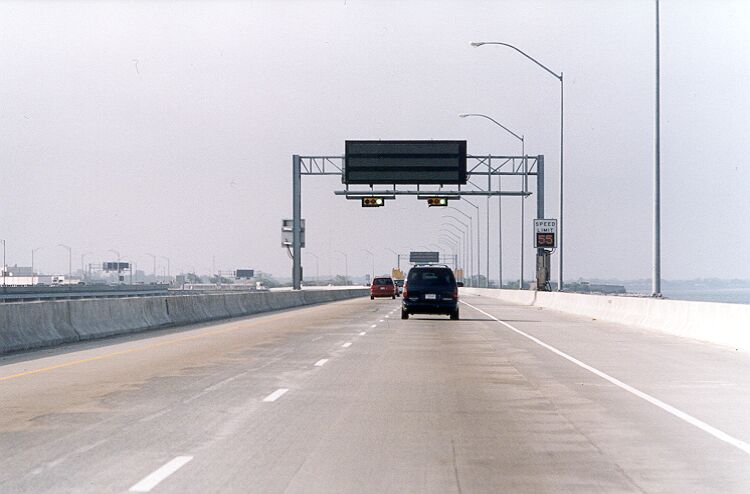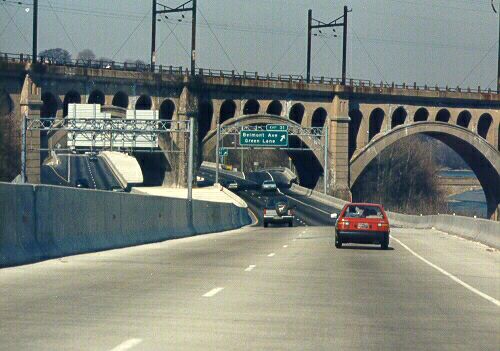I'll always remember the chart that my very old professor Santiago Corro showed to me once when I asked what kerbs were for: the road he has experimented with, could carry 13 million axles (that is, trucks passing over it) before failing. If you increased the thickness of asphalt, you could carry, I don't know, 14 million axles. If you made a thicker base, you got, let's say, 18 million axles. So, you could change the structural resistance of the roads by a third or so, by changing the amount of money invested in asphalt and granular (rocky) bases.
Now, he showed me a second chart. It showed that, when the soil under the road is saturated (full of water), the road can take 10 thousand axles. You diminish the resistance of a road a thousand times when you allow water to seep under it.
That's the reason of kerbs.
In short, curbs or kerbs curb water in curves.
In racing track curves, which is the question, they are limits to the tendency of drivers to cut the apex, as it has already been said.
As a racing track has side slope in curves, they also help tangentially to avoid puddles in the apex, which is the lower point in the lateral zones of the curve.
Some smart guy will remark that they actually create puddles, but, as explained before, what we do not want are puddles in the grass. If a wheel passes over them, the soil under the grass is essentially destroyed, as a structural element, after a few repetitions (the load carrying strength of mud is practically zero). Thus, the asphalt at the apex would fail after a few months of rain.
That's the reason of kerbs in racing tracks.
The apex is a specially bad place for asphalt to crack or fail, if you want your customers (that is, racing drivers obsessed with the apex
Kerbs and curbs, anyway, also "spread" the puddle that will form at that point, if rain is heavy enough. The apex won't "disappear" under the rain, so at least you give them drivers a reference point if the monsoon comes heavy at the Malaysian GP (that would be a very good thread: "GPs under really heavy rain"). So, they are also curve delimiters "under water".
For Pandamasque, the white line in racing, as in soccer, is "part of the field". Thus you have to put your wheel outside the line to incur in a penalty. Conversely, a soccer ball has to be completely outside the line to be out of the field.
On the corners the line that marks the edge of the "field" is the edge between the kerb and the asphalt surface, so the line has no width, ergo the kerbs are outside.
For Belatti, I know of no rules for kerb slope design.
The New Jersey Barrier has been studied for profile, but not kerbs, AFAIK. The NJ barrier is specifically designed to redirect cars. It has 3 vertical inches at the bottom and then an angle of 55 degrees. This has been designed after crash studies as the most effective angle to redirect the car, so, if you want unsurmountable kerbs, there you go: give them three inches of vertical.
Those are the profiles for redirecting barriers I have at hand, just in case. This gives you an idea of the angles tried to reject the tyre (once the tyre goes "into the barrier", the barrier will redirect the car).
GM barrier, old, designed for larger cars

New Jersey barrier, still used although it wasn't crash tested, when designed in 1955

Constant slope barrier, specifically designed to reject truck tyres, but smaller cars will crash laterally into it, without "tyre interaction"
http://www.roadstothefuture.com/I264_VA_Broad_Ck.jpg
F shape barrier, the best profile humankind has to redirect cars

As for tricks in the kerbs, they are tricky enough. However, I know studies made here in Colombia about the relationship between the height of the wheel and the height of the kerb to make them surmountable, but at low speeds. I could get the paper if you actually need to know...
Those studies were made so Transmilenio buses can surmount those kerbs, but cars cannot. In this picture you can notice the different heights of the discontinuous kerbs that separate the bus lane from the cars lane. The smaller ones can be surmounted by the bus (at low speeds, in case another disabled bus blocks the lane) in switch points like the one showed in the picture, however cars cannot do it without being redirected (at higher speeds). The larger ones redirect buses and cars. The picture shows an old design, nowadays these kerbs have a more rounded profile (the larger ones, closer to the camera, are "very square", compared with the ones used today).





